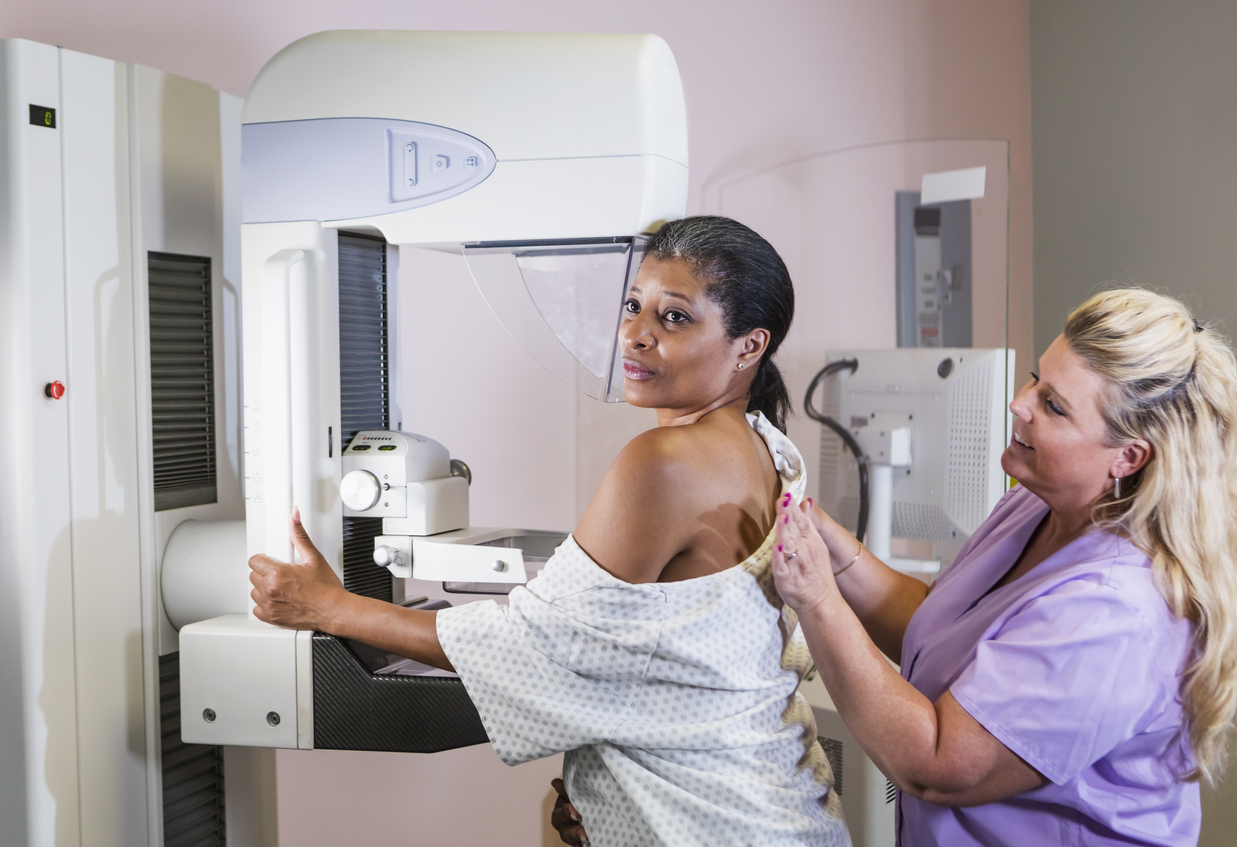
As is well known by now, breast cancer is the second most common cancer in women. White women and black women in the United States get breast cancer at similar rates, but black women die of breast cancer at a higher rate than white women.
Understanding Breast Cancer
Breast cancer begins with abnormal cells developing in breast tissue, most often in the ducts in the breast that carry milk to the nipple. Breast cancer is often defined as in situ, meaning the abnormal cells are still confined to milk ducts or sacs, or as invasive, meaning the abnormal cells have invaded other breast tissue.
Read our post about teaching breast self-examination.
Here are the primary types of breast cancer:
- Ductal carcinoma in situ (DCIS), or intraductal carcinoma – Abnormal cells are only found in the lining of a milk duct of a breast.
- Lobular carcinoma in situ (LCIS) – Abnormal cells are only found in lining in a lobule, a sac in the breast that makes milk. LCIS and DCIS are two types of breast cancer that can be detected early with a mammogram.
- Invasive breast cancer – This type of cancer starts in the milk ducts or lobules and spreads to surrounding breast tissue. It often can be detected with a breast self-exam (BSE) or a mammogram.
- Metastatic breast cancer – If a patient has breast cancer that spreads to other organs via lymph nodes or the bloodstream, it is considered metastatic breast cancer. Tumors appear in the lungs, bones, brain, or other organs.
- Locally advanced breast cancer – Although confined to breast tissue, this cancer can be very painful and aggressive. Signs of this cancer include inflammation, welts or hives on the breast, other changes in appearance, and redness and warmth in the breast.
- Recurrent breast cancer – As the name implies, this type of cancer recurs in the breast, soft tissues of the chest, or other tissues on the body.
Detecting Breast Cancer
A test used to detect breast changes, including breast cancer, is called a mammogram. Guidelines for when to start getting mammograms varies, and a woman should talk to her doctor about the best time for her to start. The doctor will likely make suggestions based on age and family history. Most women start screenings after age 40.
A mammogram is a low-dose X-ray of the breast, and there are two types:
- Screening mammogram – Screening mammograms are two pictures of each breast to look for areas that may be troublesome. If something on a screening mammogram looks suspicious, additional images may be taken, or an ultrasound of the breast may be performed.
- Diagnostic mammogram – This type of mammogram is used to further investigate any problems or changes in breast tissue. It is more targeted, and used to solve problems and make treatment plans.
This October, Pocket Nurse reminds women: Schedule a mammogram, and talk to a healthcare provider about a BSE. Several types of task trainers are available at the Pocket Nurse website to teach students about detecting cysts and tumors, performing a BSE, and using a sonogram.
Sources:
Basic facts about breast health: Breast Cancer Biology
Basic facts about breast health: Mammograms







